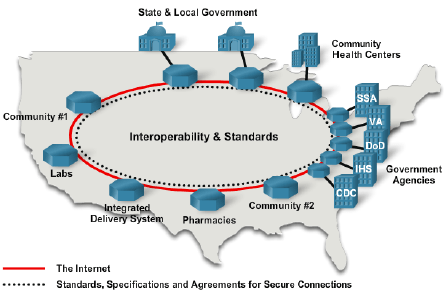Towards NATIONWIDE INTEROPERABILITY
The federal plan to create nationwide interoperability and successfully develop an intelligent health system evolves from the eHealth Exchange network. 85 percent of all US hospitals, 61 regional or state HIEs, 80,000 medical groups, 14,000 labs and over 11,000 pharmacies link to the nationwide exchange. The eHealth Exchange accounts for over 200 million patient records.
The eHealth Exchange was formed over a decade ago by the ONC, utilizing the InterSystems platform integrated with eHealth Exchange’s FHIR healthcare directory.
The hub model will makes it significantly easier for health organizations to connect, with its “connect once” framework to reach any other member in the network. The model streamlines access to patient records at lowered costs.
This approach facilitates organizations for the upcoming regulatory changes, such as the interoperability rule and the Trust Exchange Framework and Common Agreement (TEFCA).
Late in 2019, eHealth Exchange implemented Carequality into the health information network to facilitate additional exchange data methods in the effort to provide a ‘format agnostic’ gateway for all participants.
Carequality helps members lower health information exchange-based expenses and expand the National organization footprint.
With most significant HIEs now connected to the network, the eHealth Exchange creates a highly centralized health information network by providing a common gateway for all participants.
As participants continue to transition to the gateway approach, early adopters of the new architecture expand their focus to complete implementation of the Carequality Interoperability Framework to connect hundreds of thousands of physicians millions of patient records.

